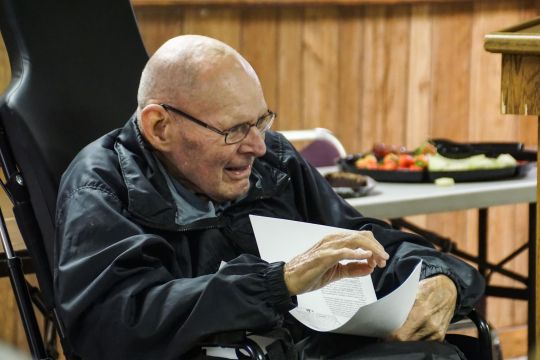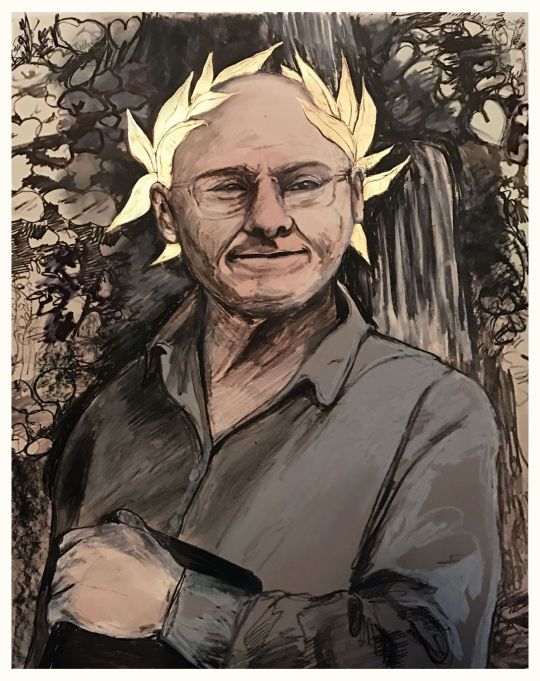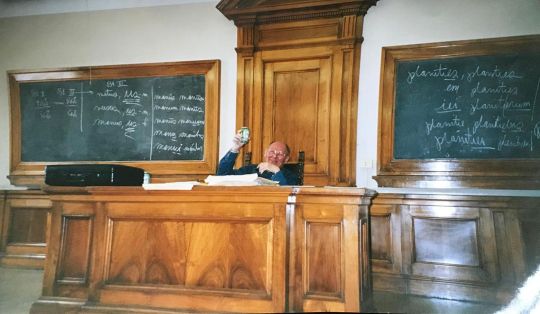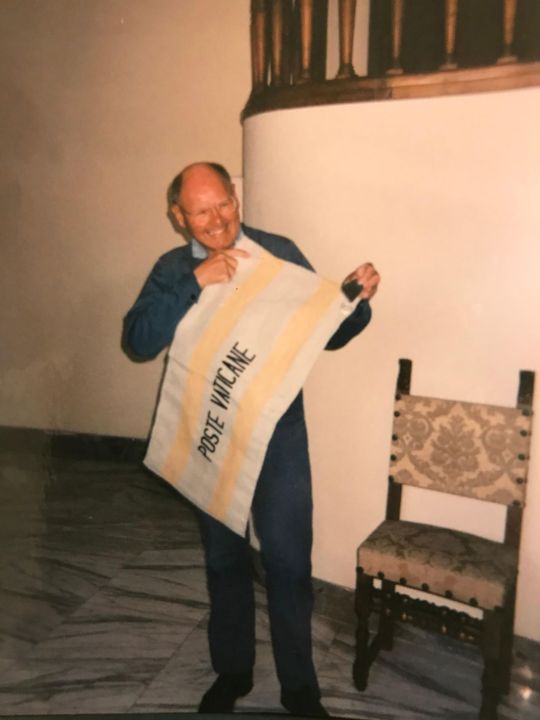#michael pedicone 2010
Explore tagged Tumblr posts
Text


Mikey Way, Michael Pedicone, Ray Toro and Gerard Way of My Chemical Romance with singers Carmen Carter, Vonda Shepard and Lorraine Perry • 2010
143 notes
·
View notes
Photo



The only hope for me is you.
Frank shows the French a bit of MCR at La Cigale, Pairs on November 1, 2010.
The concert is part of The World Contamination Tour to support the band’s fourth studio album, “Danger Day: The True live of the Fabulous Killjoys.”
[photo credit; emmgie]
#mcr#my chemical romance#my chemical romance 2010#my chemical romance la cigale 2010#my chemical romance paris 2010#danger days era#killjoys#fabubulous killjoys#killjoys never die#danger days: the true lives of the fabulous killjoys#frank iero#frank iero 2010#frank iero danger days era#frank iero paris 2010#frank iero la cigale 2010#michael pedicone#michael pedicone 2010#the world contamination tour 2010#frank iero white guitar with bear#frank iero american flag guitar strap
136 notes
·
View notes
Text
Father Reginald Foster Used Latin to Bring History Into the Present
https://sciencespies.com/history/father-reginald-foster-used-latin-to-bring-history-into-the-present/
Father Reginald Foster Used Latin to Bring History Into the Present

The death of Latin has been greatly exaggerated.
Of course, Latin is no longer the default language for European learning and diplomacy, as it was from the Roman Empire through the early modern period. Since the implementation of Vatican II in the early 1960s, even many priests don’t speak the language in a meaningful way. Still, despite Latin’s decline in political and ecclesiastical circles, hundreds of folks around the globe continue to speak it as a living language—and no teacher is more responsible for the world’s remaining crop of latineloquentes (“Latin speakers”) as Friar Reginald Foster, the Carmelite monk who served as Latin secretary to four popes from 1969 until 2009, translating diplomatic papers and papal encyclicals into Latin, which remains the official language of the Holy See. Foster died on Christmas Day, at the age of 81.
In 2007, Foster himself lamented to the BBC that he thought the language was on its way out altogether. He worried that a modern world, illiterate in Latin, would lose contact with crucial portions of history, and half-jokingly recommended that then-Pope Benedict XVI replace Italy’s traditional siesta with a two-hour daily Latin reading.
The Pope never took up Foster’s suggestion, but the irony is that Foster had already managed, almost single-handedly, to reverse some of the trends that so troubled him. His deepest passion was teaching Latin at the Pontifical Gregorian University in Rome, starting in 1977, and running his famous spoken Latin course nearly every summer, beginning in 1985. Through these courses, Foster launched multiple generations of classicists who have used his techniques to bring their students into closer contact with a past that, until recently, had seemed to be vanishing.
Foster is well remembered for his boisterous, generous presence in the classroom and on field trips. He was beloved among students, and distrusted by Vatican grandees, for his eccentric habits, which included dressing in a blue plumber’s suit and issuing caustic statements about church hypocrisy. When he was teaching—in Rome until 2009, thereafter in Wisconsin—he often nursed a glass of wine. Known by the Latin sobriquet “Reginaldus” to his legions of pupils, who in turn refer to themselves as “Reginaldians,” Foster was a hero and a jester, a pug-nosed provocateur with a satirical streak who would have fit right into a comic epistle by Horace or Erasmus. “Like Socrates, his default mode in public was ironic,” says Michael Fontaine, an administrator and professor of Classics at Cornell University.

A portrait of Foster by artist Lucy Plowe
(Courtesy of Michael Fontaine)
Fontaine, who first met Foster in the spring of 1997, makes no bones about the extent of Foster’s legacy.
“Reginald Foster succeeded in reversing the decline in living Latin. He actually, really, genuinely did it. Reggie’s success is total: There is a burgeoning movement and critical mass of young people who have now learned Latin [as a spoken language]. Reggie taught some, his students taught some, those people are teaching some, and on and on. Some of the best Latinists in the world are in their 20s or early 30s”—a remarkable development that Fontaine credits squarely to Foster’s peerless influence.
Leah Whittington, an English professor at Harvard University, who first met Foster during a summer Latin course in 1997 when she was 17, recalls the friar’s “phenomenal, ebullient energy.” “He never sat down, never seemed to need rest or eat or sleep,” Whittington says. “It was as though he was fueled from within by love for Latin, love for his work, love for his students. I had never been pushed so hard by a teacher.”
Like all of Foster’s students who spoke with Smithsonian, Whittington recalls his visionary dedication to preserving Latin by keeping it alive in everyday conversation.
“For most classicists trained in the United States or in Great Britain, Latin was a learned, non-spoken language; it was not a language that one could converse in, like French or Spanish. But for Reginald, Latin was an everyday functional language that he used with his friends, his teachers, his colleagues, with himself and even in his dreams.”
Foster went to extraordinary lengths to make sure he was keeping his students as engaged as possible with their work outside the classroom, which the friar referred to not as homework but as ludi domestici—”games to play at home.” This playful approach often proved a revelation to students used to more staid ways of teaching a language they’d been told was dead. “It’s so rare to have an immersion experience in Latin that it couldn’t fail to improve and deepen your knowledge of the language and history,” says Scott Ettinger, a Latin and Greek teacher in the Bronx, who attended Foster’s summer course in 1996.
Daniel Gallagher, who in 2009 succeeded Foster in the Latin section of the Vatican Secretariat and today teaches the language at Cornell University, still marvels at Foster’s “extreme dedication to his students.”
“He told us, ‘Call me at 2 in the morning if you’re stuck,'” says Gallagher, who began studying with Foster in October 1995. “He said, ‘I’ll even come to your house to teach you Latin.’ And I learned that he wasn’t kidding—he really would come to my house.”

Foster launched multiple generations of classicists who have used his techniques to bring their students into closer contact with a past that, until recently, had seemed to be vanishing.
(Courtesy of Michael Fontaine)
Classicist Jason Pedicone recalls his first course with Foster in 2004: “He made me feel like learning Latin was a key that would unlock endless beauty and wisdom of history, art and literature.”
“Studying Greek and Latin with Reginald was spiritually enriching,” he says. “I don’t mean that in a doctrinal way; it was just really life-affirming and made me stand in awe of humanity and civilization.” In 2010, Pedicone co-founded the Paideia Institute with Eric Hewett, another of Foster’s students; the organization offers immersive courses in Latin and Greek.
Tales of Foster have long been common among anglophone classicists. Even those who never visited him in Rome had often heard something about this eccentric priest who gave free, immersive Latin lessons.
“I had heard for some time that there was a priest in Rome who spoke Latin and gave free summer courses where you actually spoke Latin,” says Alice Rubinstein, a now-retired Latin teacher living in Virginia. “I remember some woman telling me he was like a priestly version of Don Rickles.”
“[Foster] reminds me of the humanists I study in the 15th century, especially Lorenzo Valla,” says classicist Chris Celenza, a dean at Johns Hopkins University who took courses with Foster in 1993 and marvels at the friar’s unerring ability to bring the past into the present, to make old texts new. “Foster could almost ventriloquize the authors we were studying. He was a living anachronism, and I think he knew it and kind of delighted in that.”
In his obituary for Foster, John Byron Kuhner, who is writing a biography of the friar, sounded a similar note about Reginaldus’ uncanny ability to make ancient writers seem intimate and accessible—a closeness that he fostered in his students: “The writers and artists of the past seemed to be equally [Foster’s] friends. He loved them in a way we could see, the way we love our living friends who happen to be far away.”
Foster’s famous summer Latin course was full of day trips. Traditional jaunts included the site in Formia where Cicero was assassinated by Mark Antony’s men in 43 B.C. (“Reginald would weep while reciting Cicero’s epitaph,” Whittington recalls); the gardens at Castel Gandolfo, the Pope’s summer residence, where students sang Latin songs to “papal bulls”—that is, cows grazing outside the Pope’s house; to the port town of Ostia; Pompeii and Naples; the spot at Largo Argentina in Rome where Julius Caesar was assassinated; the castle in Latium where Thomas Aquinas was born.
“Walking with Reggie through these Italian sites made Rome come alive in a way that it couldn’t have without someone of his encyclopedic knowledge of Latin,” says Alexander Stille, a journalism professor at Columbia University, who profiled Foster for the American Scholar in 1994.
“Foster used to tell us that ‘Reading Augustine in translation is like listening to Mozart on a jukebox,'” Stille says, “and that being in Rome without access to Latin was to see an impoverished version of it. He made the city come alive.”

Foster is well remembered for his boisterous, generous presence in the classroom and on field trips.
(Courtesy of Michael Fontaine)
There are many classicists (I am one of them) who never met Foster but who benefited from his teachings by studying under his protégés, many of whom use techniques pioneered by Foster.
“When I led student trips to Italy, I modeled them on the field trips Foster used to take with us,” says Helen Schultz, now a Latin teacher at a private school in New Hampshire. “On one memorable occasion, he joined me and a group of my students to talk about their studies and his work at the Vatican. He didn’t just love Latin; he also loved and cared deeply about every one of the students who learned from him and were inspired by him to do our best to keep his legacy alive.”
Like many of Foster’s students, Ada Palmer, a European history professor at the University of Chicago, says the friar opened up a whole world of post-Classical Latin literature for his charges. Rather than falling back on the typical, and almost entirely ancient, canon taught in most classrooms, he introduced scholars to the Latin of St. Jerome’s autobiography, or medieval bestiaries, or Renaissance books of magic, or rollicking pub songs from the 17th and 18th centuries, Palmer says, and thereby widened the possibilities for Latin studies across the world.
“Reggie’s enthusiasm was for all Latin equally,” Palmer says, “and he encouraged us to explore the whole vast, tangled and beautiful garden of Latin, and not just the few showpiece roses at its center. He trained scholars who have revolutionized many fields of history and literary studies.”
Celenza agrees, referring to the millions of pages of Latin from the Renaissance onward as “a lost continent” that Foster played a central role in rediscovering.
Foster was famous for many of his one-liners, perhaps none more so than his frequent reminder to students that “Every bum and prostitute in ancient Rome spoke Latin.” (In one variant on this line, “dog-catcher” takes the place of “bum.”) His point was that one needn’t be an elite to appreciate the riches of a language that began, after all, as a vernacular. But Foster’s interest in bums and prostitutes was not merely rhetorical. “He did a lot of good for the prostitutes of Rome,” Ettinger says. Foster was known for giving what little money he had to the city’s downtrodden, even though, by keeping his classes free, he ensured that he had practically no income. (He was also known sometimes to pay a student’s rent in Rome for a semester.)
“In one’s life, if you’re lucky, you’ll meet a certain number of people who are genuinely extraordinary and who try to change your life in some way. Reggie was one of those people in my life,” Stille says. “There were few people on the planet who have the relationship to Latin that he did.”
In his final weeks, Foster’s friends say, he was as boisterous as ever, even after testing positive for Covid-19: He continued working with Daniel P. McCarthy—a Benedictine monk who began studying with Foster in the fall of 1999—on their book series codifying Foster’s teaching methods. And he maintained lively conversations with protégés, often in Latin, via phone and video calls.
Today, classicists, philologists and anyone else who wishes they had taken a Latin immersion course with Foster can console themselves with several options offered by his former students. Each summer, you will find Ettinger helping organize the annual Conventiculum aestivum (“summer convention”) in Lexington, Kentucky, an 8- to 12-day immersive program that welcomes 40 to 80 attendees a year. Other Foster protégés, including Whittington, Gallagher, Fontaine and Palmer, have taught immersive classes through the Paideia Institute. Foster may be gone, but his dedication to Latin as a living language, one that puts us in direct conversation with our past, continues to thrive against all odds.
#History
0 notes
Photo


Owning the stage at Roseland Ballroom in New York City, New York on December 3, 2010.
The concert is part of The World Contamination Tour to promote the band’s fourth studio album, “Danger Days: The True Lives of the Fabulous Killjoys.”
[photo credit; kenny shin]
#mcr#my chemical romance#my chemical romance 2010#my chemical romance roseland ballroom 2010#the world contamination tour 2010#danger days era#killjoys#killjoys never die#fabulous killjoys#danger days the true lives of the fabulous killjoys#frank iero#frank iero skeleton glove#frank iero danger days era#mikey way#mikey way silver guitar#mikey way danger days era#ray toro#ray toro danger days era#michael pedicone#michael pedicone danger days era
61 notes
·
View notes
Photo



They don't like who you are. You won't like where we'll go.
My Chemical Romance comes in blazing before the NFL International Series match between the Denver Broncos and San Francisco 49ers at Wembley Stadium on October 31, 2010 in London, England.
[photo credit; andrew matthews]
#mcr#my chemical romance#my chemical romance 2010#my chemical romance nfl international series 2010#my chemical romance wembley 2010#mikey way#gerard way#gerard way red hair#michael pedicone
46 notes
·
View notes
Photo




Bring on the sass!
My Chemical Romance comes in blazing before the NFL International Series match between the Denver Broncos and San Francisco 49ers at Wembley Stadium on October 31, 2010 in London, England.
[photo credit’ andrew matthews, clive gee, ian walton]
#mcr#my chemical romance#my chemical romance 2010#my chemical romance nfl internation series 2010#denver broncos#san franciso 49ers#my chemical romance wembley 2010#frank iero#mikey way#gerard way#gerard way red hair#ray toro#michael pedicone#james dewees
33 notes
·
View notes
Photo



We are My Chemical Romance!
My Chemical Romance comes in blazing before the NFL International Series match between the Denver Broncos and San Francisco 49ers at Wembley Stadium on October 31, 2010 in London, England.
[photo credit; andrew matthews, clive gee]
#mcr#my chemical romance#my chemical romance 2010#my chemical romance nfl international series 2010#my chemical romance wembley 2010#denver broncos#san francisco 49ers#frank iero#mikey way#gerard way#gerard way red hair#ray toro#michael pedicone
24 notes
·
View notes
Photo




My Chemical Romance comes in blazing before the NFL International Series match between the Denver Broncos and San Francisco 49ers at Wembley Stadium on October 31, 2010 in London, England.
Football just got a taste of pure Emo goodness!
[photo credit; andrew matthews]
#mcr#my chemical romance#my chemical romance 2010#my chemical romance nfl international series#my chemical romance wembley 2010#denver broncos#san francisco 49ers#danger days era#killjoys#frank iero#mikey way#gerard way#gerard way red hair#ray toro#michael pedicone
22 notes
·
View notes
Photo

Gerard bringing the sass during My Chemical Romance’s performance The NIGHT THE BUZZ STOLE XXMAS 2 on December 8, 2010 at Midland Theater in Kansas City.
[photos credit; todd zimmer]
#mcr#my chemical romance#my chemical romance 2010#my chemical romance midland theater 2010#night the buzz 2010#killjoys#danger days era#gerard way#mikey way#frank iero#michael pedicone#gerard red hair
54 notes
·
View notes
Photo




My Chem is red hot at La Cigale, Paris on November 1, 2010.
[photo credit; emmgie]
#mcr#my chemical romance#my chemical romance 2010#my chemical romance la cigale 2010#danger days era#killjoys#gerard way#gerard way red hair#mikey way#mikey fucking way#michael pedicone#james dewees
28 notes
·
View notes
Photo


My Chemical Romance performing at The House of Blues on November 22, 2010 in Los Angeles.
[credits; getty]
#mcr#my chemical romance#killjoys#house of blues 2010#frank iero#mikey way#gerard way#ray toro#michael pedicone
121 notes
·
View notes
Photo



My Chemical Romance performing at The House of Blues on November 22, 2010 in Los Angeles.
[credits; getty]
#mcr#my chemical romance#killjoys#house of blues 2010#frank iero#mikey way#gerard way#ray toro#michael pedicone
84 notes
·
View notes
Photo

My Chemical Romance performing at The House of Blues on November 22, 2010 in Los Angeles.
#mcr#my chemical romance#killjoys#house of blues 2010#frank iero#mikey way#gerard way#ray toro#michael pedicone
14 notes
·
View notes
Photo

My Chemical Romance performing at The House of Blues on November 22, 2010 in Los Angeles.
#mcr#my chemical romance#killjoys#house of blues 2010#frank iero#mikey way#gerard way#ray toro#michael pedicone
11 notes
·
View notes
Photo



My Chemical Romance performing at The House of Blues on November 22, 2010 in Los Angeles.
[credits; getty]
#mcr#my chemical romance#killjoys#house of blues 2010#frank iero#mikey way#gerard way#ray toro#michael pedicone
7 notes
·
View notes
Photo

My Chemical Romance performing at The House of Blues on November 22, 2010 in Los Angeles.
#mcr#my chemical romance#killjoys#house of blues 2010#frank iero#mikey way#gerard way#ray toro#michael pedicone
4 notes
·
View notes